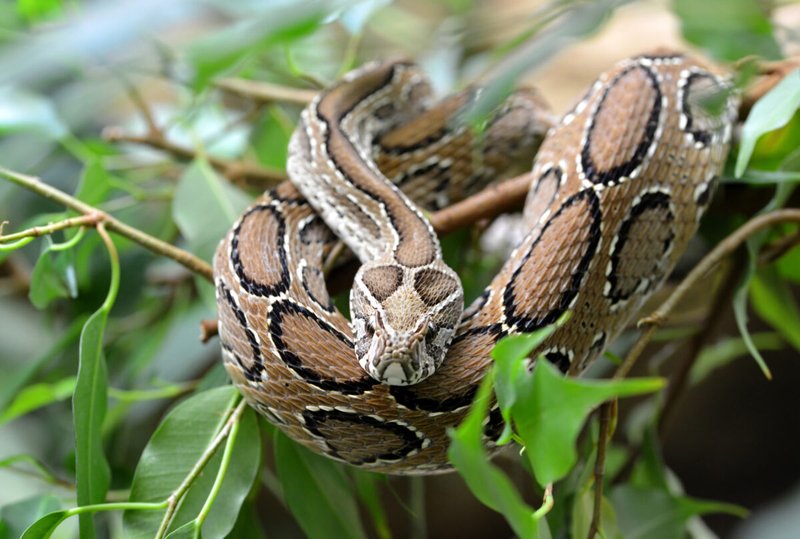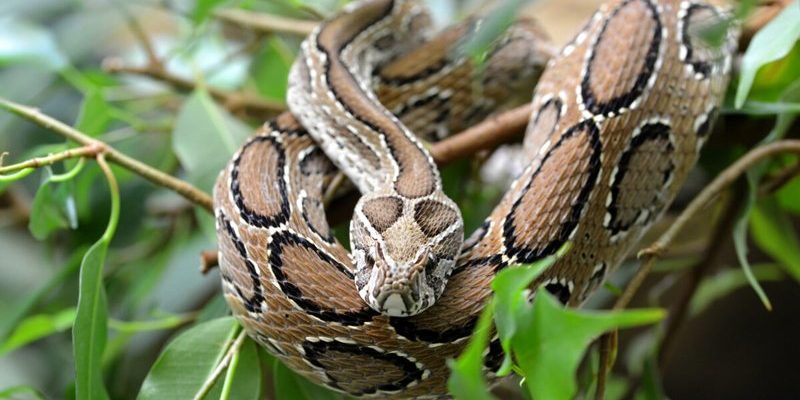
Boa constrictors are often misunderstood due to their size and predatory nature. But here’s the thing: they are non-venomous and have unique adaptations that allow them to thrive in various environments. Let’s dive into the top ten facts about these wonderful snakes that might just change how you see them.
1. The Size and Strength of Boa Constrictors
You might already know that boa constrictors are quite large, but did you know they can reach lengths of up to 13 feet? Yes, you read that right! These snakes are not just long; they are also incredibly powerful. They can weigh over 100 pounds, which allows them to take down prey larger than themselves.
Their muscular bodies enable them to constrict their prey effectively. When a boa wraps around its dinner, it doesn’t just squeeze; it does so with a grip that can crush bone. Imagine trying to escape a sturdy hug from a friend—it’s hard, right? That’s pretty much how their prey feels!
2. Unique Hunting Technique
Boa constrictors are fascinating hunters. They use a technique called constriction to catch their food, which typically includes rodents, birds, and even small deer. Here’s how it works: once they strike and grab their prey, they wrap their powerful bodies around it, slowly tightening their grip until the prey can’t breathe.
You might wonder why they don’t just bite and swallow. The constriction is crucial because it ensures the prey is fully immobilized before being eaten. This method is efficient and effective, showcasing the evolutionary adaptations they’ve developed over time.
3. Color Variations and Patterns
One of the most striking features of boa constrictors is their beautiful coloration. These snakes usually have a base color of brown, but they can display a variety of shades, from tan to reddish hues, with intricate patterns. Some even exhibit bright yellow or gold markings.
These colors are more than just aesthetic; they provide excellent camouflage in their natural habitats. When lounging on a tree branch or hidden among leaves, a boa can blend in seamlessly, making it harder for both predators and prey to spot them.
The Morphs
In the pet trade, several morphs of boa constrictors exist, which are selectively bred for specific colors and patterns. This includes options like the Albino Boa and Hypo Boa, which are beloved by snake enthusiasts. Each morph has its own unique appearance, allowing owners to showcase these stunning reptiles.
4. Habitat and Distribution
Boa constrictors primarily inhabit tropical rainforests, savannas, and even semi-deserts. They’re versatile creatures that can thrive in various environments, from swampy areas to dry regions. They are primarily found in Central and South America, stretching from Mexico down to Argentina.
These snakes are mostly arboreal (tree-dwelling) but can also be found on the ground, especially when hunting or basking in the sun. In their natural habitat, they often conceal themselves in the foliage, waiting patiently for prey to pass by, showcasing their ability to adapt to their surroundings.
5. Life Expectancy
Boa constrictors are known for their impressive lifespan. In captivity, they can live anywhere from 20 to 30 years with proper care! This long life means that owning one as a pet is a serious commitment, similar to caring for a dog or cat.
They reach sexual maturity around the age of three, and after mating, females can carry their young for about 5 to 6 months before giving birth to live young. Interestingly, a single litter can contain anywhere from 10 to 60 baby boas, making it a pretty big family affair!
6. Their Sense of Smell
You might think snakes have poor senses, but boa constrictors have a keen sense of smell that plays a crucial role in their survival. They use a specialized organ called the Jacobson’s organ, located in the roof of their mouth, to detect chemical signals in the air.
When they flick their tongue, they’re actually collecting scent particles. Then, they pull their tongue back into their mouth to “taste” these scents. This helps them track down prey or detect potential threats, making them skillful hunters and survivors in the wild.
7. A Unique Way of Moving
Unlike other snakes that slither side-to-side, boa constrictors often “crawl” by using their muscles to grip surfaces as they move. This allows them to climb trees and navigate through thick vegetation without the risk of falling.
When you see a boa in action, it may look almost graceful, as they expertly maneuver through their environment. This movement style is also apparent when they’re constricting prey, as they can coil tightly around it while still moving if necessary. It’s a remarkable adaptation that showcases their strength and agility.
8. Conservation Status
While boa constrictors are commonly kept as pets, they face threats in the wild. Habitat loss due to deforestation and human encroachment endangers their populations. Luckily, they are not currently classified as endangered; however, conservation efforts are essential to ensure their habitats remain protected.
Some countries have implemented regulations on their capture and trade, which is crucial for sustaining wild populations. Awareness and education about the importance of these majestic snakes can help reduce fear and promote their conservation.
9. Interaction with Humans
Boa constrictors are often misunderstood as dangerous creatures. The truth is, they are generally docile and prefer to avoid confrontation. Many people enjoy keeping them as pets because of their calm demeanor.
However, it’s important to remember that they are still wild animals with specific needs. If you’re considering adopting a boa, make sure to educate yourself about their care, habitat requirements, and feeding habits. It’s a rewarding experience that can bridge the gap between humans and these misunderstood reptiles.
10. Fascination in Pop Culture
You might be surprised at how often boa constrictors appear in movies, documentaries, and even books. They often symbolize strength and mystery, capturing our imagination. From the famed Harry Potter series to nature documentaries showcasing their hunting techniques, these snakes have become iconic.
This cultural fascination helps raise awareness about boa constrictors and encourages interest in wildlife conservation. By learning more about them, we can appreciate their beauty and role in the ecosystem.
In conclusion, boa constrictors are remarkable creatures with many fascinating attributes. Whether you’re captivated by their size, hunting skills, or beautiful patterns, there’s so much to discover about them. Respecting these gentle giants and their role in nature is key to fostering a better understanding of our world. So, the next time you see a boa constrictor, remember all the incredible facts about them, and perhaps you’ll view them in a whole new light!

